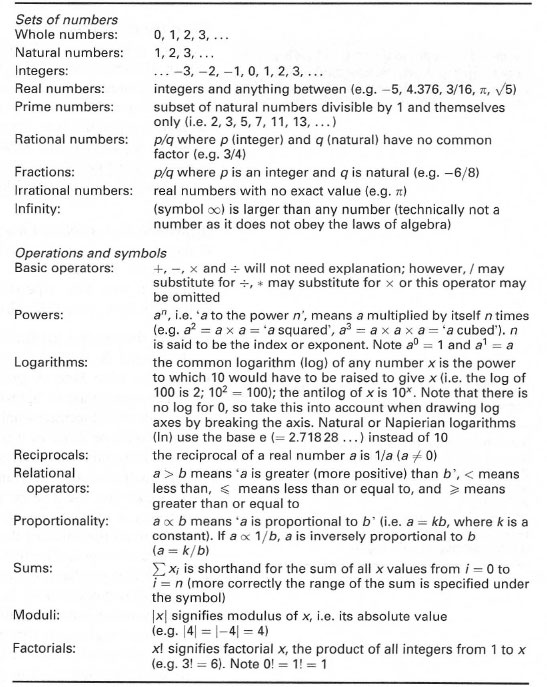Hints for solving numerical problems
Chemistry, and in particular physical and analytical chemistry, often requires a numerical or statistical approach. Not only is mathematical modelling an important aid to understanding, but computations are often needed to turn raw data into meaningful information or to compare them with other data sets. Moreover, calculations are part of laboratory routine, perhaps required for making up solutions of known concentration or for the calibration of an analytical instrument. In research, 'trial' calculations can reveal what input data are required and where errors in their measurement might be amplified in the final result, e.g. flame atomic absorption spectrometer. |
| Table 39.1 Sets of numbers and operations |
*Note: If you have a 'block' about numerical work, practice at problem solving is especially important.
Practising at problem solving:
- demystifies the procedures involved, which are normally just the elementary mathematical operations of addition, subtraction, multiplication and division (Table 39.1);
- allows you to gain confidence so that you don't become confused when confronted with an unfamiliar or apparently complex form of problem;
- helps you recognize the various forms a problem can take as, for example, in the different forms of titrations




